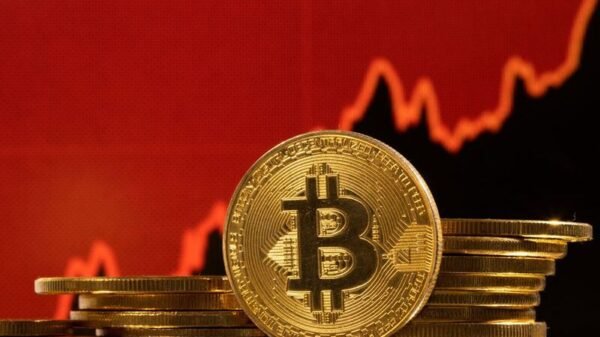Cryptoverse: Stablecoins sag in the dog days of summer. Not all assets are experiencing a late summer dip, including bitcoin. As a result of low trade volumes and a lower dollar, the market for stablecoins, cryptocurrencies often tethered to real-world assets like the dollar, has withered to its lowest market capitalization in more than two years.
They are suffering more than most. The stablecoin industry’s market valuation is predicted to decrease for the 18th consecutive month, according to research firm CCData, even if the whole crypto ecosystem has recovered considerably from its 2022 lows. This year, it has decreased by about a tenth, and as of September 14, it was worth $124.4 billion.
According to James Butterfill, head of research at CoinShares, “a lot of the appetite for stablecoins, because predominantly they are dollar-denominated ones, has to do with appetite for the dollar.” He continued that Stablecoin volumes significantly increased along with a surge in the dollar index brought on by interest rate hikes last year.
But not everything is equal. The largest stablecoin, dollar-pegged Tether, is defying the downward trend.
After spending the first three months of this year below $80 billion, it reached an all-time high of $83.8 billion in July, according to CoinGecko, and has since dropped to about $82.9 billion.
According to Paolo Ardoino, chief technical officer of Tether, the coin’s value has been boosted by its acceptance in some regions of the world.
“The entire emerging markets, the entire central South America and Central Asia, basically runs on Tether,” he continued, “which is why Tether has a stickiness among its users.”
DE-RISKING TEMPORARILY
Stablecoins play a crucial function for traders, allowing them to protect themselves against price spikes in other tokens like bitcoin or to hold idle cash without converting it back into fiat currency, despite making up only a small portion of the more than $1 trillion cryptocurrency market. Stablecoins might also be used as currency, according to some supporters.
However, with the collapse of TerraUSD, an algorithmic token formerly the fourth-largest stablecoin, which was the first domino in a sequence of dramatic failures for the industry, the market for the tokens has stagnated.
The losses of Binance’s dollar-linked token BUSD, down roughly 89% from an all-time high achieved in November, have also impacted the market. The token, formerly the third-largest stablecoin, was ordered to stop being produced by issuer Paxos in February by the New York Department of Financial Services.
Although Paxos will continue to accept BUSD until at least February 2024, a representative for Binance said the business is urging customers to exchange their remaining balances for alternative stablecoins.
The market valuation of USD Coin (USDC), the second-largest stablecoin, has decreased by more than 53% from the record high it reached in June last year and is currently around $26 billion.
At various moments last year, both Tether and USDC lost their pegs to the dollar: Tether when TerraUSD failed in May 2022, and USDC in March when Silicon Valley Bank failed, where the token’s issuer Circle Internet Financial had $3.3 billion of its cash reserves.
According to Dante Disparte, chief strategy officer and head of global policy at Circle, the bankruptcy of SVB and other regional banks earlier this year is still producing concern in the industry. At the same time, he highlighted that growth is not the company’s main indicator of success.
“There has sort of been a temporary de-risking from the U.S., but it’s not a function of regulatory ambiguity,” he added. The banking crisis’ residual repercussions are more to blame, and I predict that even there, there will be some market adjustments.
















































Comment Template